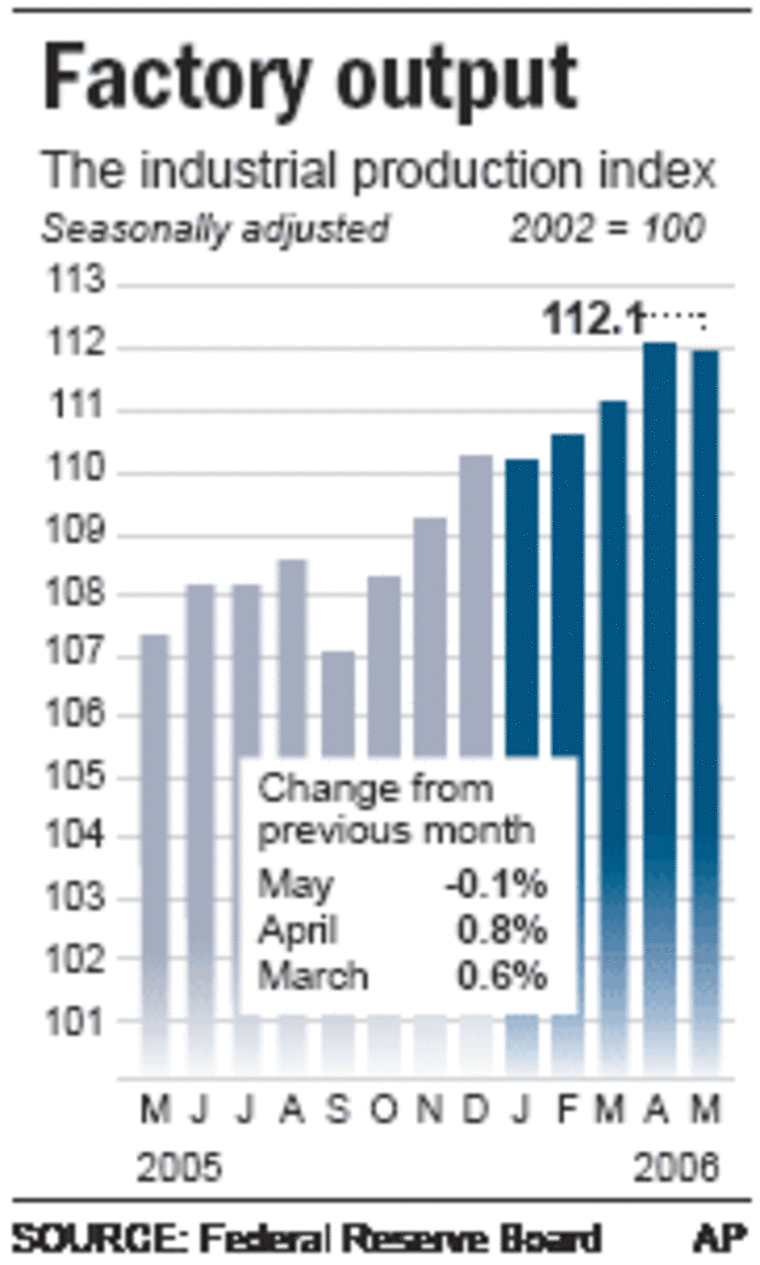Industrial production unexpectedly fell in May, reflecting weakness in manufacturing, as the economy flashed more signals of a spring slowdown.
The Federal Reserve reported Thursday that output at the nation’s factories, mines and utilities dropped by 0.1 percent last month following an increase of 0.8 percent in April.
The weakness last month reflected a slowdown of autos and auto parts as the U.S. auto industry continued to struggle with soaring gasoline prices that have sapped demand for sport utility vehicles.
Production of autos and auto parts fell by 1.3 percent last month following a smaller 0.2 percent drop in April.
The 0.1 percent drop in industrial production marked the first drop since a similar 0.1 percent fall in January. Economists believe that manufacturing, which had finally started to recover from the 2001 recession, will slow in coming months as overall economic growth slows.

The economy expanded at a sizzling pace of 5.3 percent in the first three months of the year but many economists believe that will slow to around 3 percent in the April-June quarter, as consumers struggle with rising interest rates, soaring gasoline prices and cooling home sales.
In other economic news, the Labor Department reported Thursday that the number of newly laid off workers filing for unemployment benefits dropped to 295,000 last week, the lowest level in nearly four months.
The weakness in industrial production reflected a 0.1 percent decline in manufacturing output and a 0.2 percent drop in mining production, a category that includes oil and natural gas production. Utility production rose by 0.2 percent last month.
The small decline left U.S. industry operating at 81.7 percent of capacity in May, down slightly from an April operating rate of 81.9 percent of capacity.
The Federal Reserve keeps a close watch on the operating rate to see if it is approaching levels where bottlenecks could develop and threaten to boost inflationary pressures.
The drop of 8,000 in unemployment claims marked the second straight week that claims have fallen, pushing them to the lowest level since the week of Feb. 18.
Even with the two-week improvement, economists are still looking for the labor market to gradually weaken in coming months, reflecting a slowdown in overall economic growth.
Signs of that slowdown have already shown up in the surprisingly weak increase of just 75,000 new payroll jobs in May — 100,000 below what economists had expected.
Analysts said businesses have started to trim their hiring plans in response to signs that the economy is slowing under the impact of rising interest rates, surging energy prices and a cooling housing market.
The next step after trimming hiring will be to move to layoffs, a development that would start to push unemployment benefit claims higher. Analysts said they expect to see that occur in coming months.
In the week ending on June 3, jobless claims had dipped by 34,000, reflecting in part the Memorial Day holiday, which meant that state claims offices were open one less day to accept benefit applications.